Spring Gardens Insights 2024
By Brian Nixon, Horticultural Manager
Spring is a joyous time to admire the magnificent sights, sounds and scents evolving at The Butchart Gardens. The long wait for spring is finally now over as flowers burst into colour, bringing so much excitement to The Gardens. This is certainly one of my favourite seasons, and I love watching in anticipation as each and every flower bulb opens up offering every colour, shape and size that you could possibly think of.
Gardening staff have been waiting months, “which seems like an eternity”, for the fruits of their labour to be admired by our many visitors from around the world. Hundreds of thousands of Tulip and Daffodil bulbs, along with bi-ennials were planted in November. The bulbs, consisting of early, mid and late flowering varieties, will begin flowering in early March and will continue to flower until late May. Along with the staggered timing of the bulbs, the vast collection of bulbs is something worth noting as there are some truly unique features that many of these bulbs possess. Tulips draw plenty of attention, as they should, but there are some incredibly beautiful Daffodils that have recently hit the market. Many of these Daffodils have different characteristics compared to the standard/traditional Daffodils and are really quite stunning.
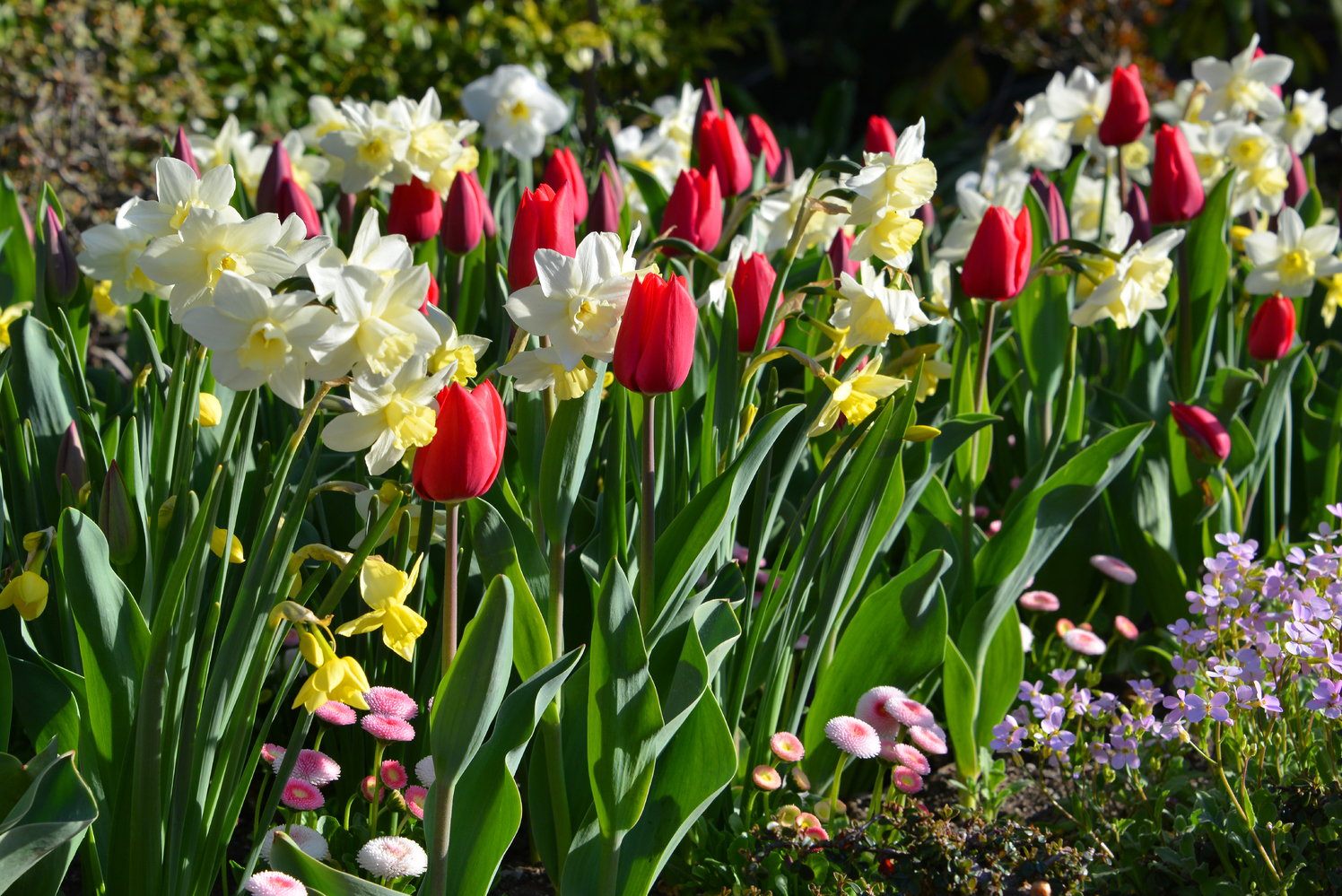
This is also a fun time for our gardening staff as we get to critique any changes that our team have made to the floral display from the previous season. Some of these changes may include new flower varieties, combinations and bed designs. While the vast majority of our floral design doesn’t change every year, we do aim for perfection which means changes are imminent. Many flower bulb varieties have been around for years, but each year breeders introduce new varieties that bring plenty of curiosity to our gardening team. We try to add a few new varieties to the mix each year, but before we do the bulbs are grown in our trials area before being introduced into The Gardens. This allows us to study the plants, learn about their growing habits and make sure that they will be the right fit for The Gardens.
So far, the timing for the spring show is shaping up to be a little behind schedule in comparison to previous years, although with the changing weather patterns I’m not really sure what to compare to anymore. The first week of March has felt more like winter compared to the previous three months! One of the first early signs of spring that we see in The Gardens that doesn’t change is the Prunus ‘Accolade’, this magnificent specimen started to flower in mid-February and is one of the most attractive early-flowering ornamental cherries. I admire the fact that plants can be used as an accurate indicator to the arrival of spring, and every other season for that matter. These are the types of notes that I take for myself when determining where we are from one year to the next – plants can be one of the most accurate seasonal indicators!
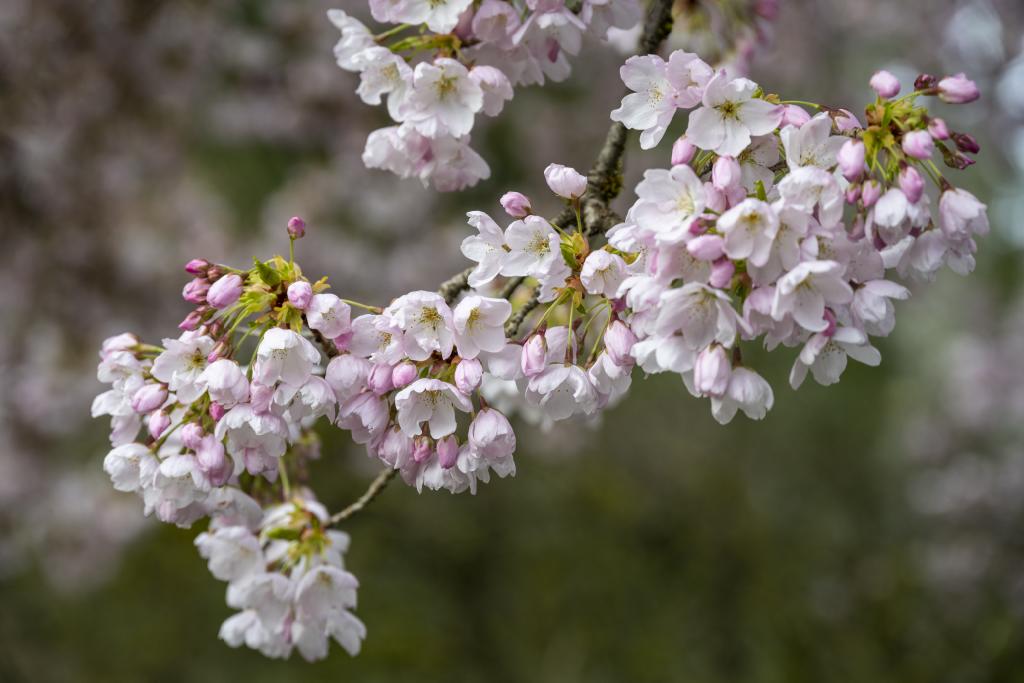 Prunus ‘Accolade’ Flowering Cherry Tree
Prunus ‘Accolade’ Flowering Cherry Tree
While the Tulips and Daffodils attract plenty of attention there are many other plants that are worth noting during the beautiful spring season. Some of my favorites include different varieties of Magnolia, Cherry, Plum, and Crabapple trees, and also include the many other species of bulbs which are planted throughout The Gardens. While the main spring display focuses on the flower beds which are front and center, there are hidden gems waiting to be discovered throughout The Gardens. In many of the backgrounds you will see continuous drifts of Snowdrops, Crocus, Glory-of-the-snow, Winter aconite, Scilla and other spring flowering treasures. One interesting fact regarding these types of bulbs is that we naturalize them, allowing the bulbs to multiply by creating offshoot bulbs or clusters around the original bulb. It takes many years for these drifts of colour to develop in our background areas, but when they do it’s a lovely spectacle.
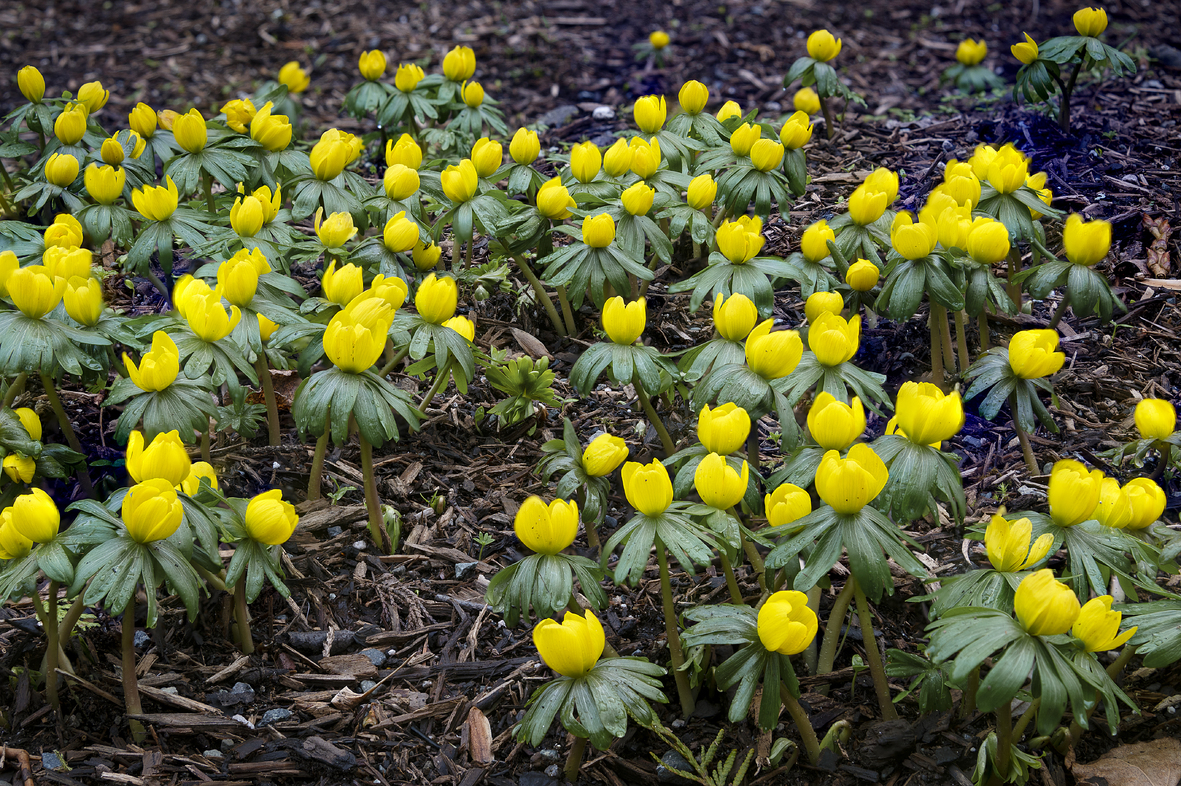 Winter aconite
Winter aconite
*Please see the detailed list below of what’s in bloom right now at The Butchart Gardens
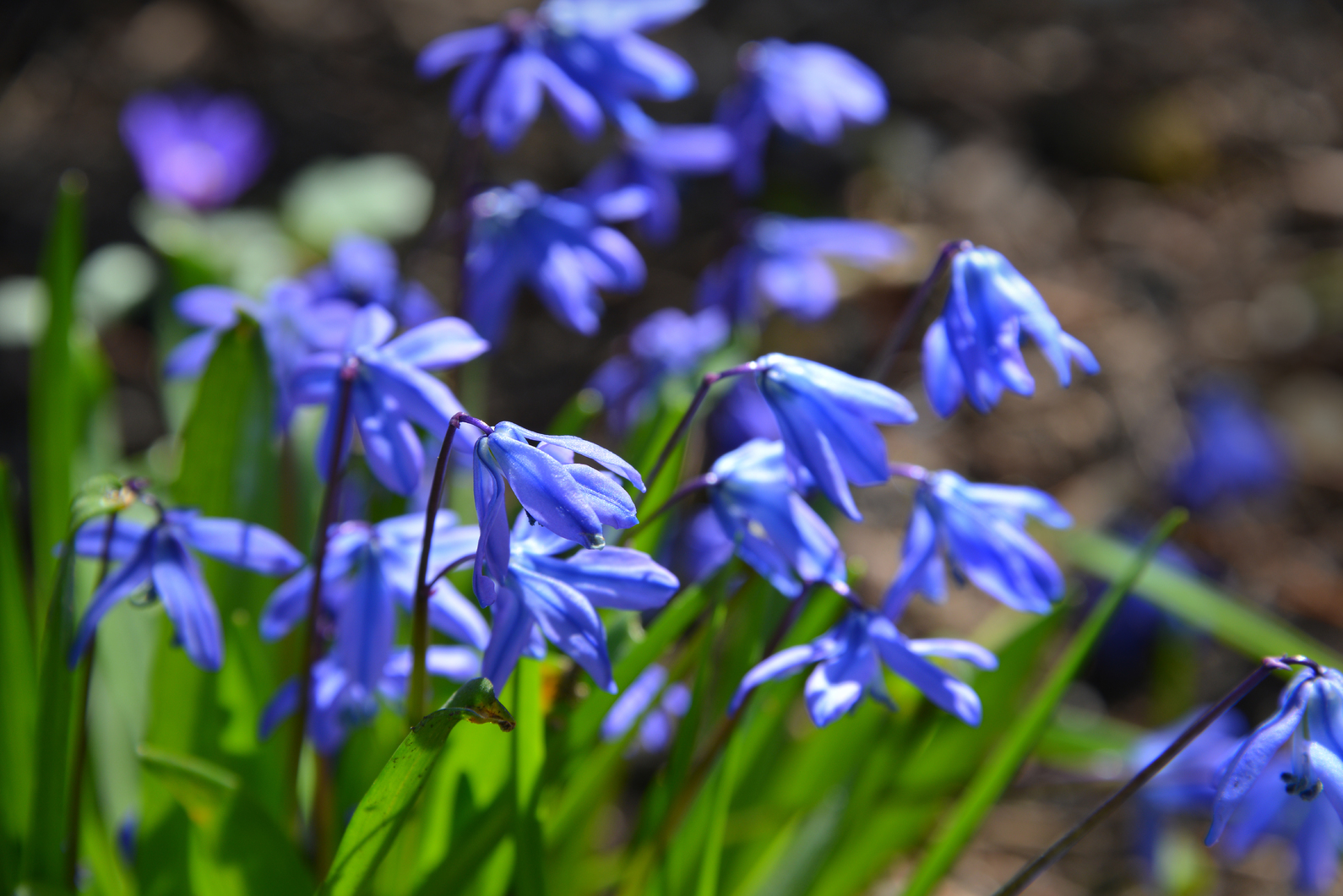 Scilla
Scilla
Overall, the past winter was unseasonably mild which can speed up the rate in which flowers develop. On top of this there was a record-shattering cold snap which brought 14℉ or -10℃ temperatures to our region. These temperatures are unheard of here on Vancouver Island where we don’t normally see such extreme temperatures. Thankfully these cold temperatures didn’t last too long, and shortly after the arctic temperatures departed, we welcomed back our more typical mild winter. I’m pleasantly surprised by the fact that there was a limited amount of winter damage to plant material in The Gardens. Sometimes winter damage doesn’t present itself until warmer temperatures arrive. Depending on the severity of cold damage, the usual protocol is to simply prune out the damaged plant material with the intention of new growth developing.
It may be early to be thinking about Roses, but the hard work has already begun to prepare the Rose Garden for the upcoming summer season. Each and every hybrid tea Rose is carefully mulched in the fall to protect the crowns from cold damage, this is because hybrid teas tend to be more susceptible to cold than other classifications. In the spring and after the threat of significant cold has passed, we start the tedious task of removing the mulch. The next step after the mulch has been removed is to prune all 2500 of the Roses – this includes the hybrid teas, floribundas, and grandifloras. The only Roses that we prune in the fall are the climbing roses. Climbing varieties have their side shoots pruned off before tying the main canes to the structures on which they are growing. Be sure to plan another trip to The Gardens in the summer so you can enjoy the thousands of Roses in bloom.

Year after year The Butchart Gardens continues to attract visitors from around the world, bringing people together to enjoy this spectacular garden. I can’t think of a better place to enjoy a beautiful spring day surrounded by elegant flowers, attractive shrubs, flowering trees and friendly staff. I encourage you to plan a visit this spring and see the magnificent floral display taking place at The Butchart Gardens.
We look forward to welcoming you during your next visit!
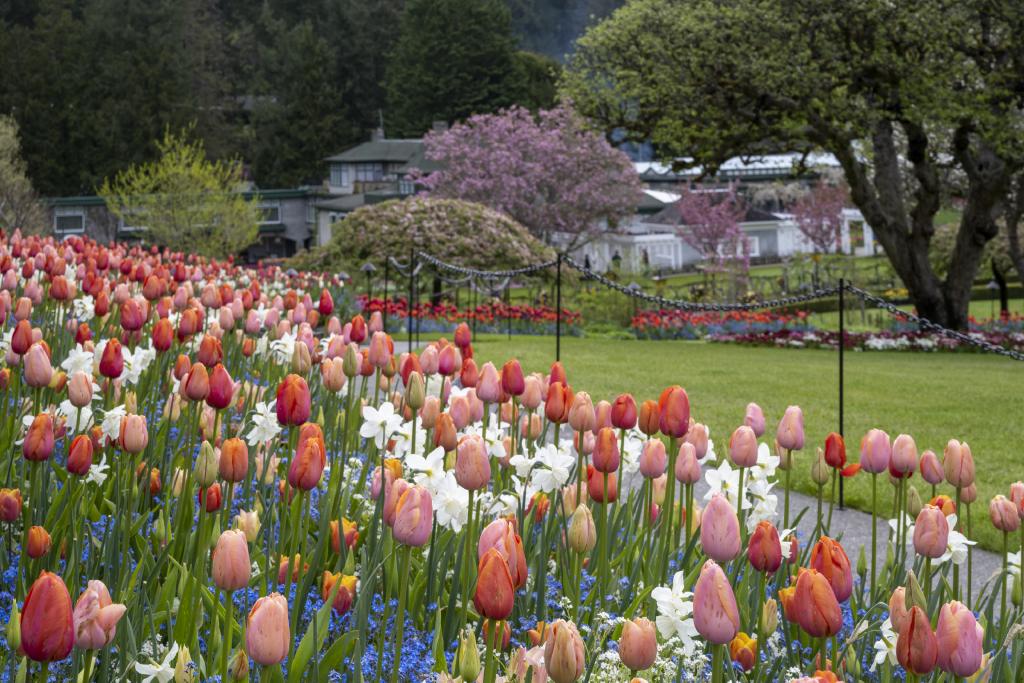
PLANTS, TREES, AND SHRUBS THAT ARE CURRENTLY BLOOMING
- Abeliophyllum distichum (White forsythia)
- Anemone (Grecian windflower)
- Arabis
- Aubrieta
- Aucuba japonica (Spotted laurel)
- Bellis (English daisy)
- Bergenia (Elephant’s ears)
- Calluna (Scotch heather)
- Camellia
- Caltha (Marsh marigold)
- Chaenomeles (Flowering Quince)
- Cornus mas (Cornelian cherry)
- Corylopsis (Winter hazel)
- Cotoneaster
- Crocus
- Cyclamen
- Daphne odora
- Eranthis hyemalis (Winter aconite)
- Erica (Heather)
- Fritillaria elwesii (Fritillary)
- Galanthus nivalis (Snowdrop)
- Hamamelis (Witch hazel)
- Helleborus (Christmas rose)
- Hepatica nobilis
- Hyacinthus
- Ilex verticillata (Winterberry)
- Leucojum (Snowflake)
- Lonicera fragrantissima (Honeysuckle)
- Magnolia x soulangeana
- Magnolia stellata (Star magnolia)
- Mahonia x media ‘Charity’ (Oregon grape)
- Myosotis (Forget-me-not)
- Nandina domestica (Heavenly bamboo)
- Narcissus (Daffodil)
- Ophiopogon planiscapus (Black mondo grass)
- Parrotiopsis jacquemontiana
- Polygala chamaebuxus
- Pulsatilla vulgaris (Lungwort)
- Pieris (Lily – of – the valley shrub)
- Primula (Primrose)
- Prostanthera rotundifolia (Mint bush)
- Prunus (Flowering cherry and plum)
- Ranunculus ficaria ‘Brazen Hussey’
- Rhododendron
- Ribes (Flowering currant)
- Scilla (Squill)
- Skimmia japonica
- Tulipa
- Viburnum x bodnantense
- Viburnum tinus
- Viola

